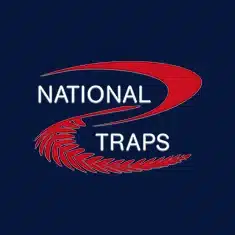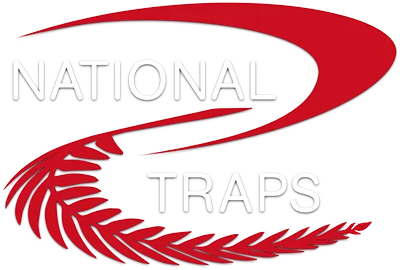The target has been set for a predator free New Zealand by 2050 – this means the complete removal of the five predators that cause the most damage to our flora and fauna: rats, stoats, ferrets, weasels and possums. Also targeted are hedgehogs and feral cats.
One of the main tools in this fight against predators are pest traps. Pest or predator traps are useful for controlling predators, not just in isolated areas but within suburbs and neighbourhoods throughout the country. That means every one of us has a part to play in creating a predator free New Zealand.
Why is predator free New Zealand important?
Because New Zealand is isolated and has been for millions of years, we are home to many species of birds, frogs, lizards and plants that are found nowhere else on Earth. This isolation has also meant, for much of time, these species had no natural predators and were able to thrive.
Over the past couple of hundred years, other species have been introduced – rats, stoats, possums, ferrets and weasels to name a few. These introduced species attack the native flora and fauna species resulting in much of our native wildlife now being under threat of extinction.
Throughout the country ordinary people have committed themselves to take action and joining the move to a predator free New Zealand – now it’s your turn.
How you can be involved in Predator Free New Zealand
In communities and suburban and rural neighbourhoods throughout New Zealand there are Community Predator Control Groups which anyone can join, or you can start a group of your own. Groups are listed on the Predator Free New Zealand website.
The most common way to make a difference is to set traps in your backyard. The most common backyard predators are rats and possums.
Setting rat traps and possum traps in your backyard will help create a garden that is safe for native wildlife to grow and thrive. There are other advantages too. It will help get rid of rats from your compost bin and other parts of your garden. It will also prevent your fruit trees from being stripped by possums.
How to trap rats in your backyard
There are a few steps you can take that will increase your chance of catching any rats that may be in your backyard (and the reality is, most backyards will have a few, even if you don’t see them).
Step 1: You may already have a good idea where any rats in your garden are hiding out. Perhaps you’ve seen one inside your compost heap or next to your rubbish bins.
Other times, you may have seen evidence of a rat but you’re not certain where it is. In this case, location cards are handy. They will help you locate pests and may even help identify the pests in your backyard.
Step 2: Before placing and baiting your rat traps, it’s important to remove other food sources. Rats will go for the easiest to access food source which is most likely not a trap – it will usually be your compost or rubbish. So, make sure rubbish bins are covered and your compost bin is, for the period of trapping, free from any food rats might find attractive.
Step 3: Pre-baiting can help with trapping effectiveness. By placing your desired bait out for the rats to feed on, they get used to it. So, when it is placed into the trap it is not so foreign to them.
Step 4: Choose a trap and set it in place. One of the most effective rat traps in New Zealand is the BT200 Trap. These rat traps have been independently tested against the National Animal Welfare Advisory Committee (NAWAC) standards and achieved a Class A rating. It is specifically designed to kill rats and stoats. Any rats you catch should be gotten rid off carefully, either in the rubbish or buried. If you’re asking, “What bait should I use in a rat trap?” many people find peanut butter to be an effective bait to use in rat traps.
Follow these same steps to capture ferrets and stoats using the BT250 Stoat and Ferret Trap.
How to trap possums in your backyard
As with rats, there are a few steps you can take that will increase your chance of catching any possums that may be in your backyard.
Step 1: Find out where a possum is most likely to be in your backyard. Possums tend to prefer areas that are forested or bushy. They may even set up house in piles of leaves or dilapidated buildings. As long as it’s warm, dry and isolated, a possum will consider it as their home.
Step 2: Remove food and water that might attract possums. Remember, you want the easiest food to access to be the food you place in your possum trap. So, as with rat trapping, seal rubbish bins and stop, for a while, placing food that a possum would find attractive into your compost heap.
Step 3: Choose a trap and set it in place. An ideal trap for possum trapping in New Zealand is the BT001 Warrior Possum Trap. During testing, this possum trap killed ten out of ten possums in accordance with the National Animal Welfare Advisory Committee (NAWAC) guidelines.
Safety considerations
Working towards a predator free New Zealand is a fantastic goal, but remember to take proper safety precautions. Rats, Possums and other pests can carry diseases. Wear gloves whenever handling these animals and ensure you don’t get bitten.
A predator free New Zealand is possible
It sounds like a big ask – for New Zealand to be predator free by 2050 but it’s possible. All it takes is for people to invest in a rat or possum trap and use them effectively.

National Traps is a division of National Springs, born from a desire to contribute in a meaningful way to the conservation of New Zealand’s delicate ecosystem. To this end, we have been supplying traps across New Zealand since 2010 to help Kiwis in their efforts to eradicate introduced predators. Allowing more of our native birds to safely re-enter the spaces they were once forced to flee.

